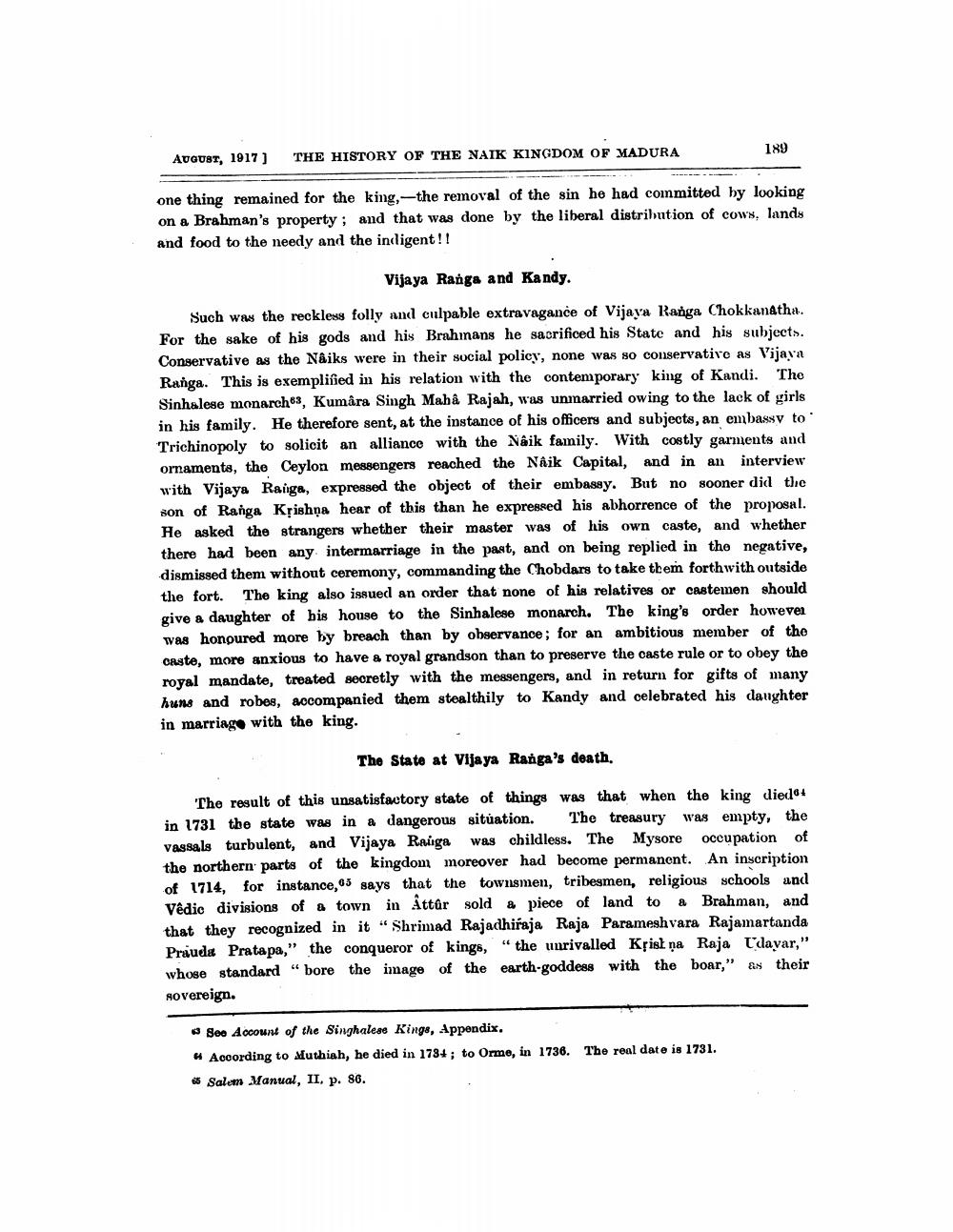________________
189
AUGUST, 1917] THE HISTORY OF THE NAIK KINGDOM OF MADURA
one thing remained for the king,-the removal of the sin he had committed by looking on a Brahman's property; and that was done by the liberal distribution of cows, lands and food to the needy and the indigent!!
Vijaya Ranga and Kandy.
Such was the reckless folly and culpable extravagance of Vijaya Ranga Chokkanatha. For the sake of his gods and his Brahmans he sacrificed his State and his subjects. Conservative as the Nâiks were in their social policy, none was so conservative as Vijaya Ranga. This is exemplified in his relation with the contemporary king of Kandi. The Sinhalese monarches, Kumâra Singh Maha Rajah, was unmarried owing to the lack of girls in his family. He therefore sent, at the instance of his officers and subjects, an embassy to Trichinopoly to solicit an alliance with the Naik family. With costly garments and ornaments, the Ceylon messengers reached the Naik Capital, and in an interview with Vijaya Raiga, expressed the object of their embassy. But no sooner did the son of Ranga Krishna hear of this than he expressed his abhorrence of the proposal. He asked the strangers whether their master was of his own caste, and whether there had been any intermarriage in the past, and on being replied in the negative, dismissed them without ceremony, commanding the Chobdars to take them forthwith outside the fort. The king also issued an order that none of his relatives or castemen should give a daughter of his house to the Sinhalese monarch. The king's order however was honoured more by breach than by observance; for an ambitious member of the caste, more anxious to have a royal grandson than to preserve the caste rule or to obey the royal mandate, treated secretly with the messengers, and in return for gifts of many huns and robes, accompanied them stealthily to Kandy and celebrated his daughter in marriage with the king.
The State at Vijaya Ranga's death.
The result of this unsatisfactory state of things was that when the king died in 1731 the state was in a dangerous situation. The treasury was empty, the vassals turbulent, and Vijaya Rauga was childless. The Mysore occupation of the northern parts of the kingdom moreover had become permanent. An inscription of 1714, for instance, 5 says that the townsmen, tribesmen, religious schools and Vêdic divisions of a town in Attûr sold a piece of land to a Brahman, and that they recognized in it "Shrimad Rajadhiraja Raja Parameshvara Rajamartanda Prauda Pratapa," the conqueror of kings, "the unrivalled Krist na Raja Udayar," whose standard "bore the image of the earth-goddess with the boar," as their sovereign.
3 See Account of the Singhalese Kings, Appendix.
According to Muthiah, he died in 1734; to Orme, in 1736. The real date is 1731.
65 Salem Manual, II, p. 86.




